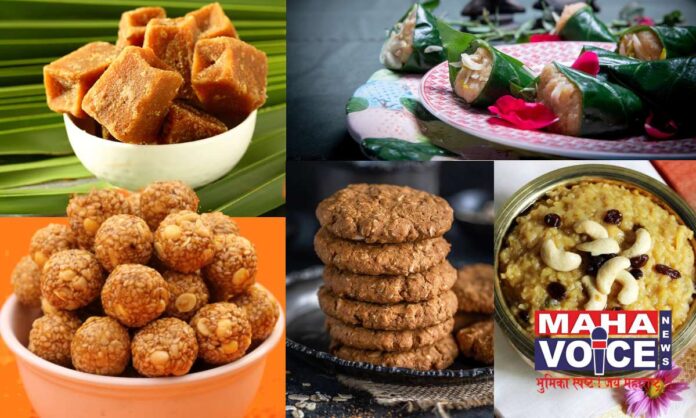By – Dr. Kaviraj Khialani, Celebrity Master Chef.
Introduction to Jaggery?
Jaggery is a traditional non-centrifugal cane sugar consumed in some countries in Asia and the Americas. It is made from concentrated sugarcane juice or palm sap without the use of chemicals.
The juice is boiled to create a thick, dark, concentrated product that is then poured into molds to cool and solidify. Jaggery contains natural nutrients and minerals, making it a healthier alternative to refined sugar. It is commonly used in various cuisines for its distinctive flavor and is also used in traditional medicine for its potential health benefits.
Brief history on how it started?
The origins of jaggery can be traced back thousands of years. Its production methods are believed to have originated in the Indian subcontinent, where sugarcane cultivation and
processing techniques were developed around 3,000 BCE. The knowledge of making jaggery spread to other parts of Southeast Asia, China, and later to the Middle East and the Mediterranean.
In ancient times, sugarcane juice was extracted using various methods, and the juice was boiled down to produce a concentrated product, which eventually evolved into what we now know as jaggery. The process of making jaggery was likely discovered through experimentation and the need for preserving sugarcane juice without the sophisticated refining processes we have today.
Types of Jaggery?
Jaggery comes in various types, each made from different sources and processing
methods:
Sugarcane Jaggery: Made from sugarcane juice, it is the most common type of jaggery.
Palm Jaggery: Produced from the sap of palm trees, palm jaggery has a unique flavor
and is widely used in some Asian and African countries.
Date Palm Jaggery: Derived from the sap of date palm trees, it is popular in the Middle East and North Africa.
Coconut Jaggery: Made from the sap of coconut palm trees, it is prevalent in certain tropical regions.
Sapodilla (Chikoo) Jaggery: Produced from the sap of the sapodilla tree, it is used in parts of Central and South America.
Bamboo Jaggery: Made from bamboo extracts, it is popular in Southeast Asia.
How is Jaggery used in our Indian cooking?
In Indian cooking, jaggery is a versatile ingredient used in both sweet and savory dishes.
Here are some common ways it’s used:
Sweets and Desserts: Jaggery is a key ingredient in many traditional Indian sweets and
desserts. It’s used in dishes like Gulab Jamun, Payasam, Ladoo, and Halwa to add sweetness and depth of flavor.
Curries and Gravies: In some Indian curries and gravies, especially in regional cuisines like Gujarati and Maharashtrian, jaggery is used to balance the flavors. It cuts the tanginess of tamarind and sourness of tomatoes in dishes like Sambhar, Rasam, and Amti.
Chutneys and Pickles: Jaggery is often added to chutneys and pickles to balance the heat from spices and the sourness from ingredients like tamarind or vinegar. It’s a key ingredient in Tamarind Chutney (Imli Chutney) and certain types of Mango Pickles (Aam Ka Achar).
Beverages: Jaggery is dissolved in hot water to create a sweet base for traditional beverages like Ginger Jaggery Tea or Palm Jaggery Juice. Snacks: Some Indian snacks like Chikki (a type of brittle made with jaggery and nuts) and Tilgul (sesame and jaggery sweets) use jaggery for sweetness.
Fermented Foods: In certain fermented foods, jaggery acts as a natural sweetener. For
example, it’s used in traditional idli and dosa batters to aid in fermentation.
Medicinal Purposes: In Ayurvedic medicine, jaggery is used to make various medicinal
formulations due to its believed health benefits.
Health beneflts of Jaggery?
Jaggery offers several health benefits due to its natural properties and nutritional content:
Rich in Nutrients: Jaggery is a good source of vitamins and minerals, such as iron, magnesium, potassium, and vitamins. These nutrients play vital roles in various bodily functions.
Digestive Health: Jaggery aids in digestion. It activates the digestive enzymes in the body, which help in emcient digestion of food. Anemia Prevention: Being a rich source of iron, jaggery can help prevent and treat iron- deficiency anemia by increasing the red blood cell count in the body.
Boosts Immunity: Jaggery is loaded with antioxidants and minerals that boost the immune system and help the body fight against infections.
Detoxiflcation: It acts as a natural cleanser for the body, flushing out toxins from the liver and aiding in detoxification processes.
Respiratory Health: Jaggery is believed to be effective in treating respiratory issues like
asthma and bronchitis. It is often consumed with warm water or tea to provide relief from these conditions.
Menstrual Pain Relief: Consuming jaggery can help alleviate menstrual symptoms like cramps and mood swings due to its richness in iron and other essential nutrients.
Bone Health: Jaggery is a source of calcium, which is essential for maintaining strong and healthy bones and teeth.
Weight Management: Compared to white sugar, jaggery is considered a healthier sweetener. It provides energy to the body without adding empty calories.
Regulates Blood Pressure: Jaggery contains potassium, which helps in maintaining blood pressure levels in the body.
6 recipes using Jaggery easy to make.
1] Til Ladoo (Laddu)
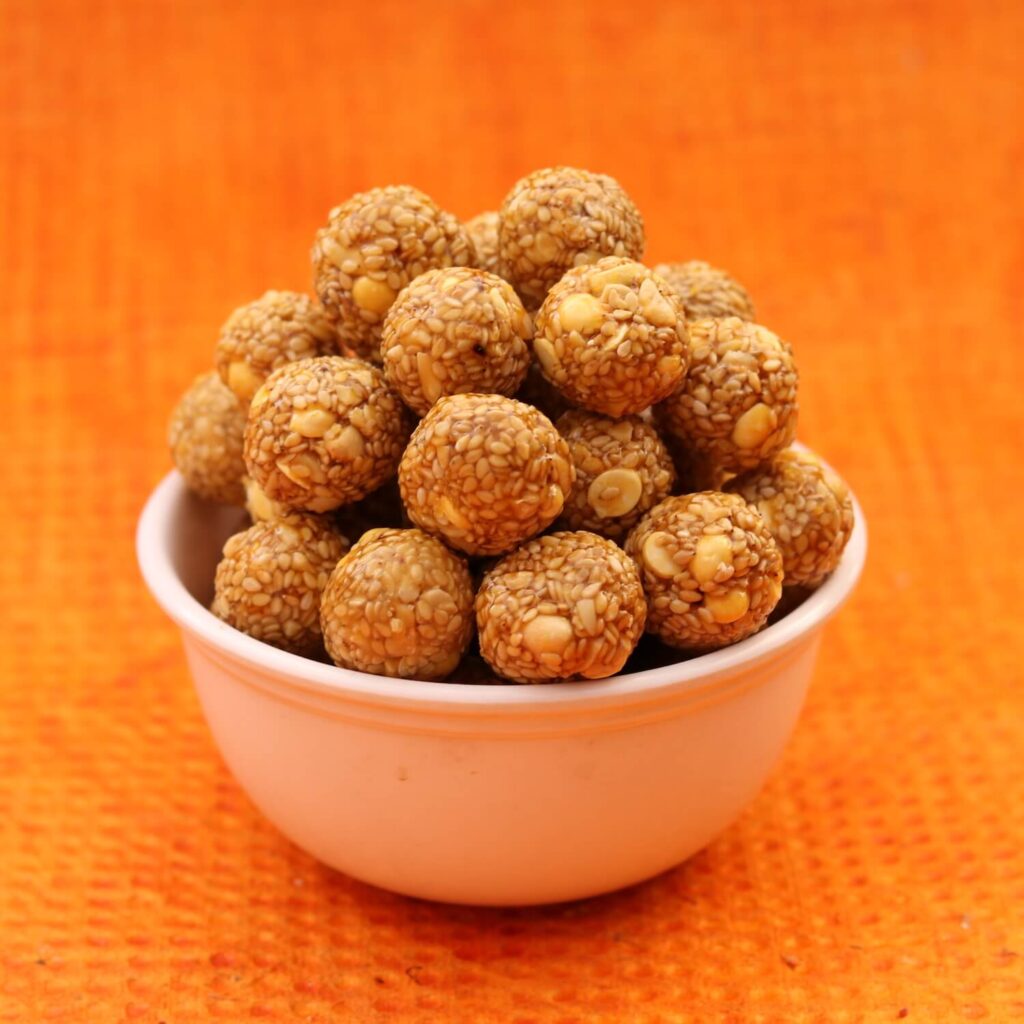
Ingredients
- 1 Cup White sesame seeds (toasted)
- 1/2 cup Khoya (softened)
- 1/2 cup Jaggery (crumbled) A
- pinch of Saffron stigmas 2 tsp
- Canola oil
- 2 tbsp Milk (warm), full cream
Method
- Heat a thick bottom pan, add canola oil and to it add sesame seeds.
- Continuously keep stirring the sesame seeds until they turn light golden hues. Take it off the flame and remove the sesame seeds on to a flat plate.
- Soak saffron in warm milk and reserve it. In the same pan as of sesame, add jaggery and melt it to liquid, gently keep stirring it till it froths without reducing it too much, take it off the flame.
- Before it starts to solidify add to it saffron milk, stir it. Add to it softened khoya, sesame seeds and blend well together with mixing spoons.
- Now oil your palms with a bit of canola oil and using your fingers take small portion f the mix (ensure the mix isn’t too hot to burn you) and shape it into medium sized balls. Continue this until you have used up all mix.
- Serve it at room temperature and this can go well during a party at home as pass around of sweet snacks.
2] SINGORI
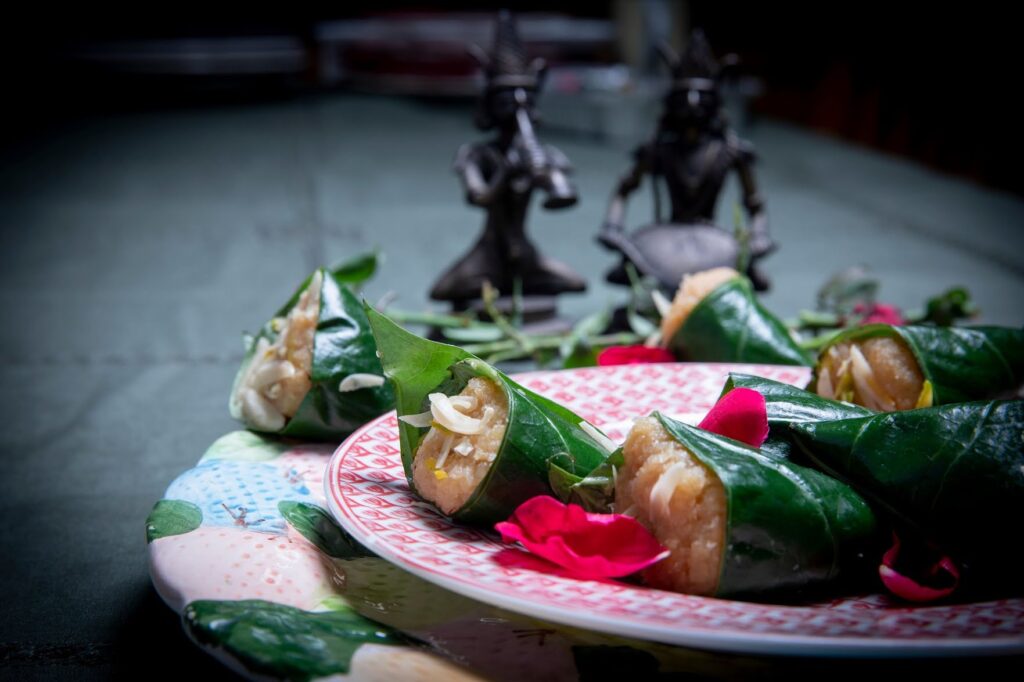
Singori is a famous dessert in India that is prepared from mawa. Jaggery and grated coconut are served wrapped using banana leaf, and topped with rose petals. This sweet is prepared during the seasonal celebrations of Uttarakhand, India as a special delicacy.
Ingredients
- 1 cup fresh grated coconut 3
- tbsp fresh rose petals
- 10-12 banana leaves folded into cones
- ½ kg unsweetened khoya/mawa
- ½ cup jaggery
- ½ kg unsweetened khoya/mawa
Method
Smash the mawa on a flat surface until it becomes smooth. Mix the mawa with jaggery in a pan. Cook the mawa-jaggery mixture for about 10 minutes. Add fresh grated coconut. Cook for another 10-15 minutes. Remove from heat.
Let the mawa mixture cool down completely. Divide the mixture into 20 equal balls. Transfer each mawa ball to each banana leaf cone. Decorate the cone with fresh washed rose petal. Singoris are ready to be served.
3] KESARI JAGGERY RAJBHOG

Ingredients
- 2 cups cottage cheese
- 1 tbsp semolina
- 3 cups grated jaggery
- ½ tbsp saffron soaked in milk 4
- tbsp mawa
- ¼ cup cashews
- ¼ cup almonds
- ¼ cup pistachios
- 1 tsp cardamom powder
- Few drops of yellow colour
Method
Make a powder of all the dry fruits. Knead the cottage cheese and semolina into a smooth dough. Mix the nuts powder, mawa, saffron milk, and the cardamom powder as well. Make a smooth paste of it and add the cheese mixture. Make small balls of this mixture. Now, in a pan, mix jaggery and water. Let it boil till you get a thin syrup. Add yellow colour to this syrup. Put all the cheese balls in this syrup. Cook it on high flame for 10-15 minutes. Let it cool and serve chilled.
4] OATS JAGGERY COOKIES

Ingredients
- 1 cup oats
- ½ cup whole wheat flour
- ¼ cup almond
- ¼ cup desiccated coconut
- ½ cup jaggery powder
- ¼ cup honey
- ¼ cup oil
- ½ tsp baking powder
- ¼ tsp baking soda
- ½ tsp cinnamon
Method
Preheat the oven at 170°C for 10 minutes. Grease or line a baking tray with parchment paper or aluminium foil. Grind the almonds and oats into fine powder. In a large bowl, mix all the ingredients with almonds and oats powder. Combine and mix everything well. Don’t knead much. Make small balls and lightly press with your palm. Place on baking tray 1-inch apart. Bake for 10 minutes or until the edges become brown. Cookies will be soft when hot. So, let it cool down completely. Serve or store in airtight container for later. Enjoy these healthy and yummy cookies with your tea, coffee, or milk.
5] Sakkarai Pongal
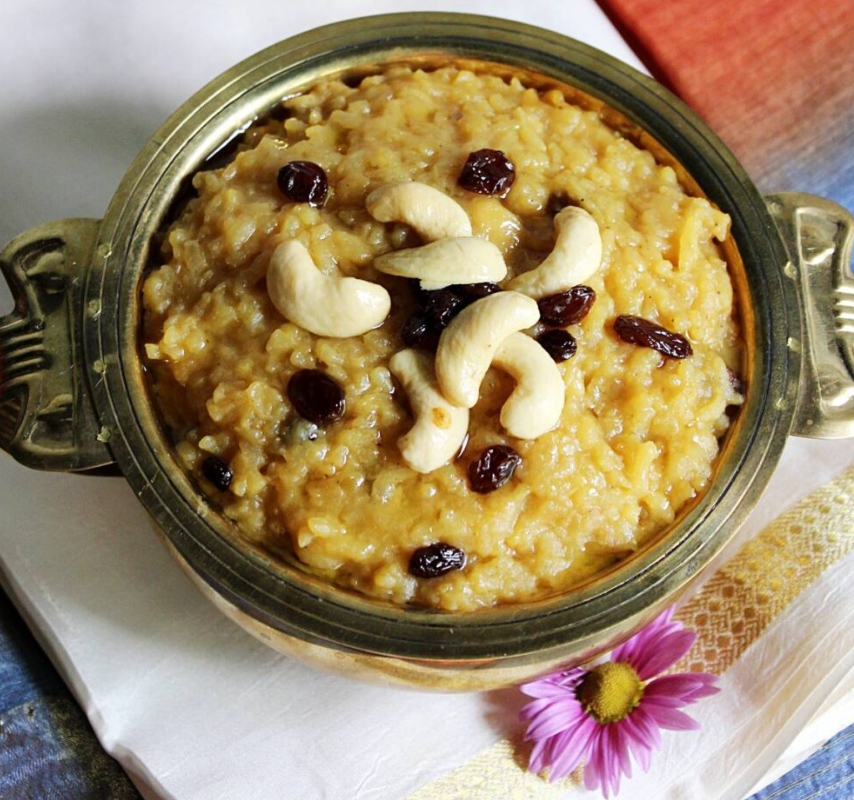
Sakkarai Pongal is one of the well-known recipes of South India’s harvest festival Pongal.
This delicious dish is prepared with jaggery to give its sweet taste.
Ingredients:
- 1 cup of rice
- ¼ cup of moong dal 1
- litre of milk
- ¼ cup of cashews
- ½ cup of dry fruits
- ½ cup of jaggery 1
- tbsp of ghee
Method:
Step 1: Wash and soak the rice and moong dal separately.
Step 2: Heat the milk in a vessel. Add the rice and mix it well till the milk starts reducing.
Step 3: In a pan, add the moong dal, ghee, cashews and dry fruits, and heat it. Saute till the dal turns golden brown.
Step 4: Continue cooking this mixture while adding it to the rice and milk, and make a syrup of the
jaggery and water in another pan.
Step 5: Lower the heat and add the jaggery syrup when the mixture has thickened.
Step 6: Stir it well and reduce the heat. Let it simmer for four to five minutes.
6] Jaggery Millet Pancakes
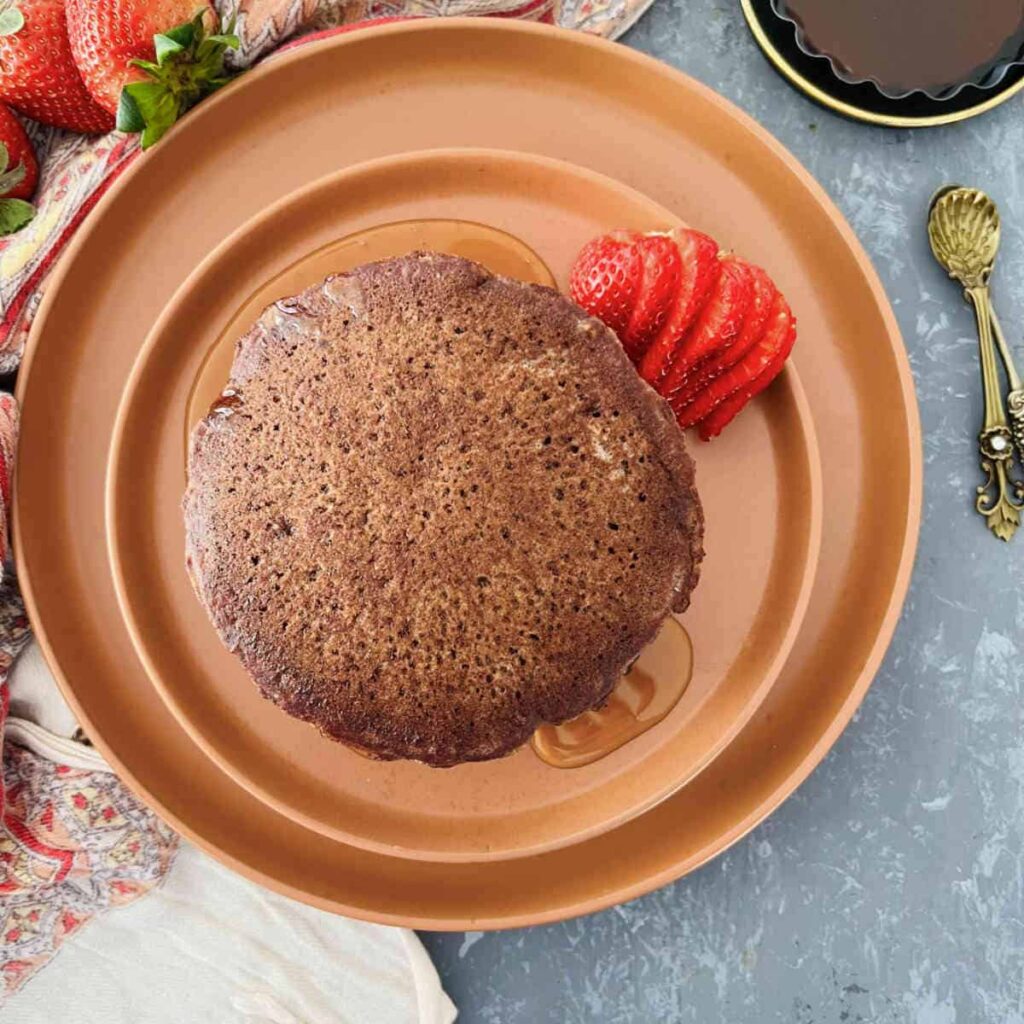
Ingredients:
- Ragi flour: 1/2 cup
- Wheat flour: 1/2 cup
- Jaggery powder : 1/4 cup
- Curd: 1/4 cup
- Milk: 3/4 cup
- Baking powder: 1 tsp Baking
- soda: 1/2 tsp
- Vanilla extract: 1/2 tsp Salt, one pinch
Method
- Take a deep bowl and mix all the dry ingredients.
- Then, add curd, milk, and Jaggery to the dry mix and mix everything well. To adjust
the consistency, you can add more milk. - Now, for flavouring add vanilla extract, fennel seed, or cardamon. Let the batter rest for 5 minutes.
- Heat the tava and pour one scoop of the pancake batter on it. Cook both sides on low flame.
- Once golden brown on both sides, take them off the tava and serve them. Conclusion.
In conclusion, jaggery is a versatile and natural sweetener with a rich history and numerous health benefits. It is widely used in various cuisines for its unique flavor and nutritional value. From sweets and desserts to savory dishes and beverages, jaggery enhances the taste of a wide range of recipes. While enjoying its sweetness and health benefits, it’s important to consume jaggery in moderation as part of a balanced diet. Its cultural significance and culinary versatility continue to make it a cherished ingredient in kitchens around the world.

